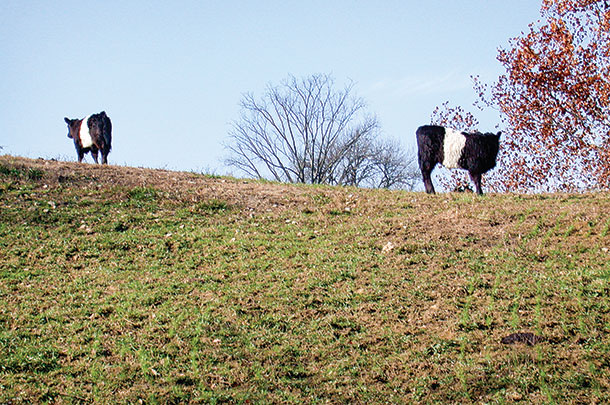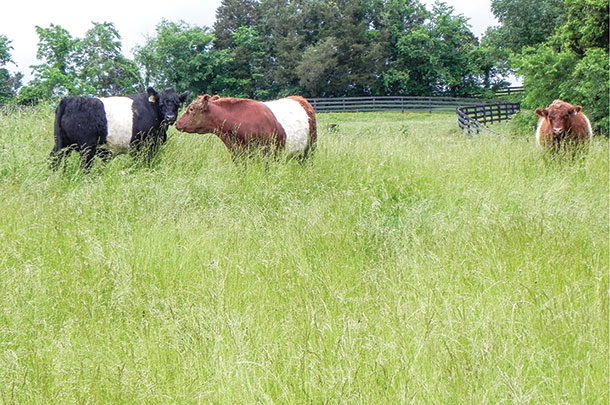“I just don’t have an alternative to overgrazing,” “Hay is just too expensive,” “I don’t have the equipment needed to renovate,” “Do you have any idea what that is going to cost me?” and my personal favorite: “Short is beautiful.”
Unfortunately, producers don’t always recognize or acknowledge the symptoms of overgrazing, and too often the realization of what is happening comes after the damage is already done.
So if you’re guilty of the complaints above, or if you’re seeing things like more weeds than desirable plants, the information in this article can be a benefit to you.
Steve Fransen, a forage specialist at Washington State University, says, “It can be difficult for producers to admit they have overgrazed. They tend to say, ‘I don’t think it’s that bad’ or ‘I have seen a lot worse,’ but if they really dig down deep, and if they’re honest with themselves, they will notice that there is a management problem.”
Some common signs of overgrazing may include:
- Running out of feed before the grazing season ends
- Seeing more ribs than ribeyes
- Seeing more bare and open spaces than covered land
- Water ponding on the surface due to lack of infiltration
- A change in forage species
- The gate or water area trampled bare
- Or ... you start calling around for cheap hay
Most of you probably understand the key to successful grazing lies within the rest period, and overgrazing occurs when an animal is left in a pasture too long or brought back too early, but can you detect “overgrazing” rather than “overgrazed”?
Do you know the difference between the rest period in June rather than August? Do you have a grazing plan?
Because pasture animals are selective grazers and will overgraze when given the chance, it makes pasture management much more difficult, Fransen says.
“A lot of the time, I see producers working for their animals rather than the animals working for them. Ranching is about capitalizing, making use of differences and variation of time and space to reach your goals – not the animals’ goals.”
A testimonial
As a pasture manager, you have the opportunity to positively influence the pasture’s quality, structure and productivity, but as with anything, you can also have a negative impact – something Kentucky producer Jon Bednarski knows too well.
Beginning his farming career in 2003, Bednarski thought he had all the right cards in his hands. Not only had he successfully established a niche market selling grass-fed beef, but the demand for his direct-marketed product was quickly outpacing his supply.
To keep up with the demand, Bednarski started buying more cattle and added another 100 acres to his 50-acre farm. With his smaller acreage, some being hilly terrain and woodlands, Bednarski set up his 60 head of cattle on a 10-day rotational system.
But as time went on, and a consecutive three-year drought plagued the state, Bednarski soon realized some big changes had to be made.
“When the drought hit, it essentially made us realize that we didn’t have enough pastures to give the land the rest it needed,” Bednarski says. “The land just couldn’t support the cattle, and at that point I had to take a look in the mirror and ask myself, ‘What do I do here? The cattle aren’t getting enough feed; we are hurting the land."
"How are we going to correct this?’ But on the flip side, you can give the land as much rest as you want, but if you’re not getting enough moisture, the pasture won’t come back anyway.”
Bednarski explains that when rotating his cattle, he was moving them into pastures with 4 to 6 inches of regrowth instead of his goal of 8 to 10 inches. At that point, the cattle were eating the regrowth fairly rapidly, and he realized he was either going to have to reduce the number of cattle or start feeding hay – and that’s exactly what he did.
“I think the lesson we learned is: You need less cattle, more land – or you need to improve your forage base,” he says. “The problem with overgrazing is: You can’t really correct it overnight. I had always heard the saying that you need to be a forage farmer before you can become a cattle farmer, but I never fully understood what that meant until I was in that situation.”
Forage doctrine
Industry professionals often talk about a pasture being overgrazed, but Charles Cheyney of Idaho State University says “overgrazing” doesn’t happen to the pasture itself; it happens to the individual plants.
“Individual plants have to renew their nonstructural carbohydrates through photosynthesis and regrow leaves to collect solar energy in order to maintain their root systems,” he says.
“When these plants are grazed again before they have recovered from the previous grazing event, they can be said to be ‘overgrazed.’ This weakens the plant; it is less vigorous, the leaves are smaller, and if this continues, eventually the individual plant dies, leaving weedy plants for the animals."
"However, when this happens to most or all of the desirable plants in a pasture, we often say that the pasture is overgrazed.”
Some producers believe forage is “wasted” if it isn’t grazed; however, it is just the opposite. Both Fransen and Cheyney strongly suggest that plants should never be grazed below 4 inches because of the sugars that are stored in the bottom portion of the plant.
This area is the most palatable to animals and is one of the most critical parts of the plant. Fransen says when animals are turned out in a pasture that has a variation of tall and short grasses, the short grasses are what they continue to graze over and over again. For long-term survival of pastures, it is important that you keep an eye on the stubble heights throughout the year and allow for adequate rest, especially during root regeneration periods.
The repentance process
So what about those of you who have already created an overgrazed situation? Can you intervene and get the pasture back on track? Is there any light at the end of the tunnel? The answer is: yes and no.
“It can be reversed,” Fransen says. “But there is a real fine caveat. If you change your management around, you can improve the productivity, but the caveat is that the carry capacity will never, ever be as good as the time you went in there and messed it up big time."

"You will come back, but you will never achieve the same level of productivity, the same carry capacity as you did before because you have changed the environment.”
Fransen says, “Now, if you go in and destroy it, have you changed it? Absolutely; it is a whole new ball game. But when you go down this road of overgrazing and say things like, ‘I have no alternative,’ ‘Hay is too expensive’ and ‘Why would I spend money on a soil test?’ it is very difficult or even almost impossible to reverse.”
Just like economic sustainability cannot be achieved without environmental sustainability, long-term pasture success cannot be achieved without a little humility.
As a pasture manager, you have to recognize and be willing to change your management practices, even if it costs money. Do what you can before “overgrazing” becomes “overgrazed.” FG
PHOTO 1: Pastures can recover from overgrazing, but it doesn’t happen overnight. With management changes, today Bednarski’s pastures are healthy and carrying capacity has improved.
PHOTO 2: It takes roughly three weeks for plants to regenerate the sugar lost during grazing. Bednarski admits that he was moving his cattle into paddocks that hadn’t recovered from the previous grazing – a lesson learned the hard way. Photos courtesy of Jon Bednarski.










